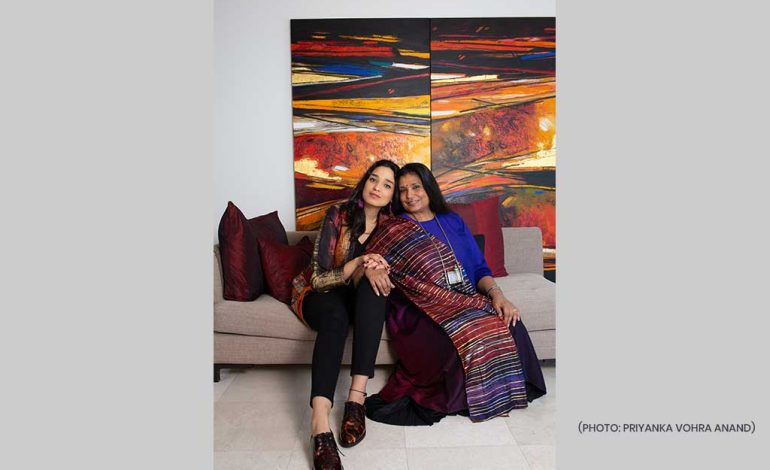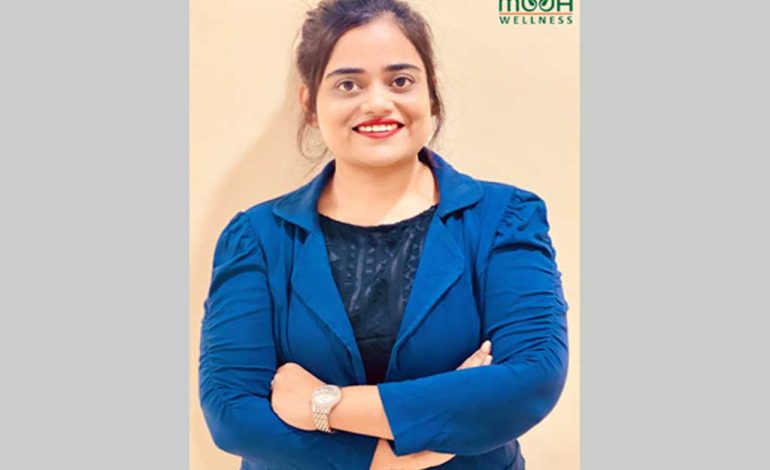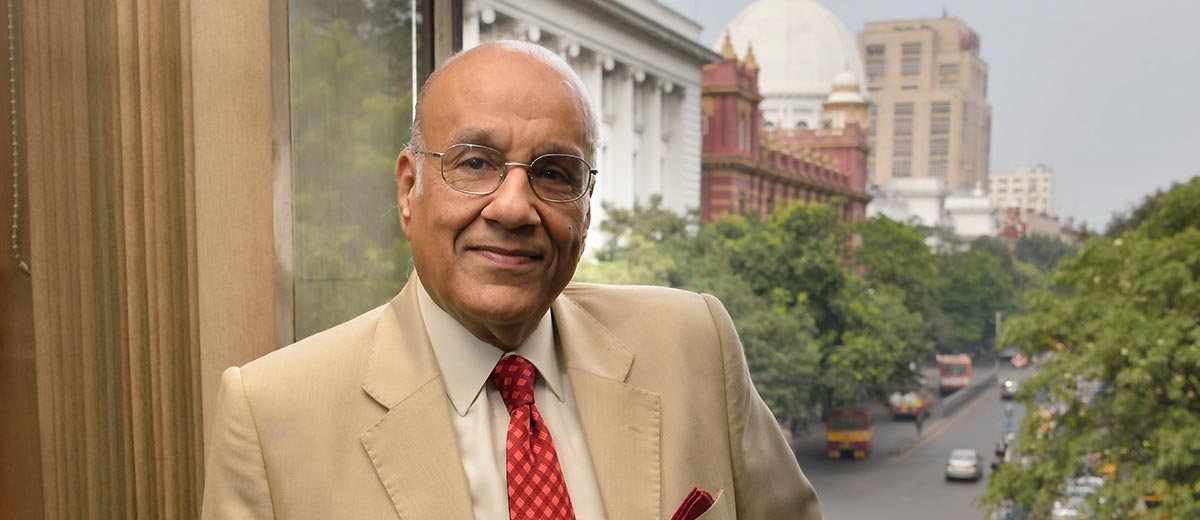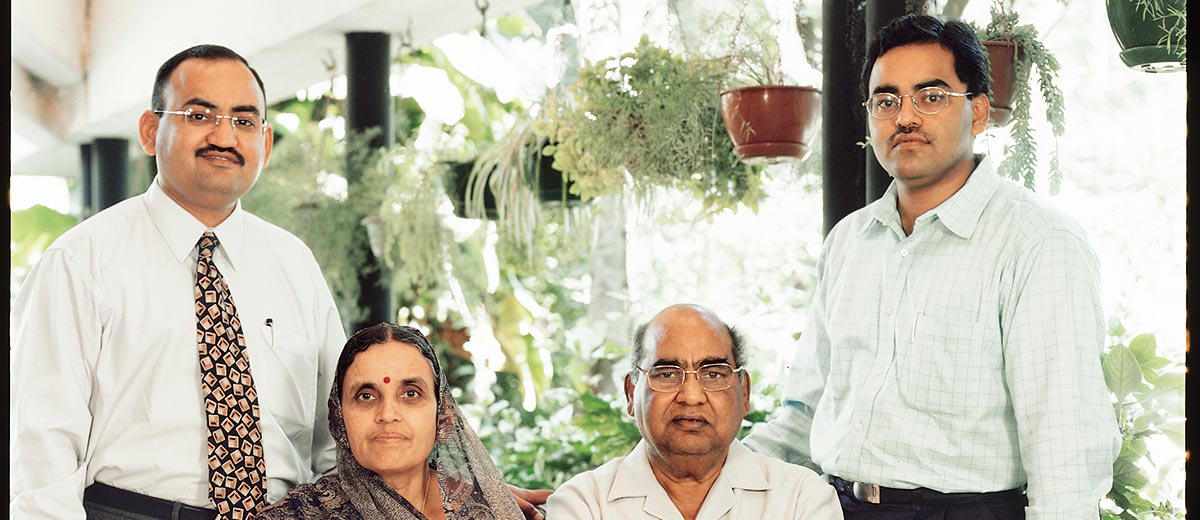
Setting New Mother-Daughter Goals
Sujata Bajaj and Helena Bajaj Larsen are setting a brilliant example of mother-daughter bonding that goes far beyond the traditional relationship in Marwari families. MARWAR India unfolds their emotional connection and the sense and sensibilities they share amidst a background of inter-racial marriage and cross-country cultures.
Celebrated Indian artist Sujata Bajaj lives between Paris, Dubai and India now and her daughter Helena Bajaj Larsen, a multi-disciplinary designer as of recently in Amsterdam. The duo may be separated by time and distance, but are connected over multiple things. “We are always in touch through texts, voice-notes, phone calls, and Instagram. We constantly share even the smallest of experiences with one another-be it a recipe we made, an exhibition we went to, debating on a jewllery purchase and so on,” they elaborate. Besides Rune Jul Larsen (Sujata’s Norwegian husband and Helena’s father), they share a common love for art, colours, design, travel, India and so on. Their relationship with colours is also similar. “We both are a bit loony in that respect and can stand in front of a door for 10 minutes because we like the shade of teal it has (while my dad has walked ten metres ahead already). We have emotional responses to beautiful visuals with the same intensity and few people understand us most of the time,” states Helena.
In a free-wheeling chat with MARWAR on their recent trip to India, the duo share how they inspire and empower each other amidst a fine blend of traditional and contemporary settings.
Inspiration and admiration
Sujata and Helena are two strong women coming from different generations, backgrounds and cultures yet so closely connected-always inspiring each other. “I am completely in awe of my artist mother. She inspires me due to what she has achieved and her positioning as a respected contemporary Indian artist today, especially having started as a woman back in those times as well as having taken that work globally is no simple feat. With time, I am realising that my admiration lies even more in the entire process that led her to this place. As I attempt to build my own name in the creative space, I am seeing how difficult the life of an artist can be, with the tremendous highs and lows. My mother has showcased incredible strength throughout her life and is, even today, a fighter like no other person I know. She has a resilience that moves me every day. What impacts me the most is that she never gives up and manifests everything in her life. If she believes in something, it happens and when it does n’t she gracefully accepts that it will happen later. She does not allow for external opinions to affect her sense of self and purpose. She leaves no one feeling indifferent, she is truly a force of nature and I can only hope to make people feel the same way about me as she does when she walks into a room-bright, inspired and challenged. Her advice is the one I value most though of course, we have a generational gap and a cultural gap which can, as with anyone, lead to disagreements. Ultimately, I feel, we really try to understand each other’s perspectives,” she muses.
Sujata replies, “More than my daughter learning from me, I think I get to learn so much from her. She has an unbelievable aesthetic sense, a strong sense of intuition and sees a lot of things in a different light. She is wise, swift and sharp with an amazing grasping power. She has many talents and is creative in a variety of ways: she is a fantastic cook, a skilled photographer, and a wonderful writer. She has a good head on her shoulders and is very independent in her decisions, her travels, her projects.” Sujata is also proud that her daughter is a fine blend of Indian and Norwegian cultures and looks. “She has got mixed looks, stands tall at 5.10 feet with a Mediterranean complexion. Most importantly, she does not in any way allow for her contrasting roots to result in a lack of cultural identity,” she emphasises.

Rewind to earlier times
Their story goes back to 1988 when Sujata went to Paris after she was awarded a scholarship from the French Government to study at l’Ecole Nationale des Beaux-Arts de Paris. “Colours and lines played an important role in my life. After studying Art & Painting at SNDT College in Pune, I pursued a Master’s degree in Fine Arts, and went on to do my Ph.D on Indian Tribal Art.” She spent five years in tribal areas across the country for her thesis and it is during this time that she met renowned artist SH Raza.
It was in the city of love that Sujata met this Norwegian diplomat and linguist, Rune Jul Larsen, who came to buy her artwork during an exhibition and the two fell in love. Coming from somewhat opposite corners of the globe, their cultures and traditions were very different. But convincing her family for the marriage didn’t take long. “I told them that I liked this Norwegian guy but I won’t marry him unless they met and approved of him.” Sujata invited Rune to meet her parents (Radhakrishnaji Bajaj and Anusuya Devi Bajaj) who were then living in a Gandhian institute in Gopuri Wardha and were disciples of spiritual master Sri Vinoba Bhave. “Life was tough in the ashram, but a determined Rune managed to win my parents’ hearts. I suppose he understood how India works. He went up to my father and asked for my hand in marriage. They liked him and gave their consent for marriage.” The two got married in 1991 in Paris and SH Raza was the marriage witness. The Indian wedding celebration took place in Pune in January 1992.
“Till date, Rune laughs that he only bought the painting, the artist came free with it!” she smiles. About dealing with the differences in culture, Sujata believes, “Keeping the channel of communication open is the key to any successful marriage. I blended the two settings by retaining my staunch Indianness and learning the good things of the new world I had entered.”

Raising Helena
Helena was born in 1995. An Indian artist mother and Norwegian diplomat father and being born and raised in Paris, notwithstanding all this, a young Helena adapted to different cultures and languages very well. She fluently speaks in Hindi, Norwegian, French, English, as well as understands many more, Spanish, Italian, Marwari and Marathi! “In her formative years, I would communicate with Helena only in Hindi, as I wanted her to learn the language naturally. My parents were so happy that she could communicate with them flawlessly in their own language.” Being an artist, Sujata’s work timings were erratic. “I would take Helena along with me to the studio and give her colours and paper to keep her busy. She was all of five when I would travel to Mumbai for my art shows. I remember, I would put her to sleep on a dupatta in the corner of the art gallery while I would be working till late. Even at that age, she could sense that she wasn’t supposed to disturb her mother at work.”
Having grown up, Helena considers herself lucky to have been exposed to the arts through her mother, having been tagged along to her outings. She recalls, “A huge chunk of mom’s outings were to art events, exhibitions, openings and dinners with fellow artists. I have spent many afternoons on the floors of Raza Sahib’s (SH Raza, who was like a grandfather figure for me) studio. One could say, I held a fascination for the art field and its curious characters from the very beginning. There was something magical about it all and I knew I wanted to belong there when I got older. This resulted in all my extra-curricular activities involving some sort of brush, pencil or glue.”
She adds, “My father being a diplomat, an expert in linguistics and one of the smartest people I know, no doubt influenced my love of reading, writing and storytelling in general. In parallel to arts, I have always enjoyed drafting short stories and had the chance to dabble in some journalism over the years.”

Making her own choices
Helena is indeed a fantastic example of adaptation of different cultures. “However, Indian culture has weighed a bit more heavily in my upbringing and remains the culture I feel closest to. It is true until I was six years old, my mother spoke to me solely in Hindi and if I responded in English she walked away from me! Indeed, I was raised vegetarian and as I got older I chose to continue as I felt it aligned with my personal values. She was instrumental in ensuring that whenever I visited India as a child I did not feel like a European kid going on a trip to visit a ‘foreign’ land. In Paris, I was seen of course as not ‘really French’ but it did not bother me as a child at all, probably my parents again wanted me to feel at home and their decisions reflected this. I did not go to an International or American school, nor did we live in an expat-centric neighbourhood. I completed a very French curriculum at a very French school and my life from 9.00 am to 5.00 pm every day was 100 per cent French.”
As a young girl, Helena was strong enough to assert her opinions and define her values. “She was very young when we were visiting this art show on cruelty against animals in Oslo. That day, she came up to me and said ‘Mamma, I am really glad I am a vegetarian’.” I had raised her this way for her earliest years but she is the one who chose to continue on. It was a big decision as Paris back then was not the easiest place for this type of diet. She had 900 students in her school and she was the only one who was a vegetarian. She would go to her friends’ birthday parties and sometimes return without eating a thing,” confides Sujata. “I have raised her in an atmosphere where we follow homeopathic or ayurvedic remedies like kadhas (medicinal concoctions), healthy juices, steaming, etc. when she is sick. As a child, she always loved coming to India and visiting her relatives. She felt very much at home everywhere.”
Helena’s growing up years were spent shuttling between Paris, India and Norway while visiting her grandparents. “Most of my friends growing up had to take a car or a train to see their grandparents and saw them weekly or monthly-my case was a bit different as I grew up in a city where my two parents were my only family. A plane ride to see any other relatives was always something which seemed totally normal to me. I have very fond memories both of playing chess in the outskirts of Oslo whilst munching on Nordic brown goat cheese as well as running around the Pawnar ashram-where my eldest uncle Sri Gautam Bajaj lives-looking for tamarind trees and collecting a variety of painful splinters in the process,” she reminisces.
Even at that age, Helena knew she was different and was fine with it. “I knew I was different, I mean I went home to Bollywood and them to Aznavour (famous French singer). This separation enhanced itself with age and me getting closer to India and Dubai through my work which also cemented my sense of belonging to the east. I feel I was welcomed more as a creative person in this part of the world and the things I wished to craft were available to me here as well as the right audience to receive it.” She adds, “You quickly realise over time that everyone will put you in a different cultural box depending on context and what suits them. Having said that, I think we are moving towards a society where there are more interracial marriages resulting in a whole new segment of society which does not need to root itself in one culture.”
Love for art and design
Art and design have played a significant role in Helena’s life and career. Her focus from the start has been on textile design and textural explorations in surface design through various mediums. After receiving her Baccalaureate in Economics and Social Sciences from the Ecole Alsacienne with highest distinctions, Helena pursued her Bachelor’s in Fashion Design at Parsons School of Design in New York during which she also completed a semester-long exchange at Central St Martins in London specialising in print. The experience at Parsons helped her approach everything in her work and develop a strong design identity. Though her degree focused on fashion design, she gravitated towards a textile-based practice which touches upon multiple areas of design and not just clothing.
Discussing her deep affection for fabric, Helena says, “I enjoy textiles as a medium because of the experimentation possibilities and it being an accessible material and easier to manipulate. It offers unlimited possibilities in terms of composition, colour and texture. I also love that it applies to so many mediums: fashion, interiors, art.” As a senior project at Parsons, her thesis on Khadi led her to read about the fabric and its importance to her family’s history but in a greater sense as one of her country’s history. “It was the perfect topic as it covered my love of textile and linked it with a deeply personal heritage. My mother wore only Khadi till she was 30; my grandfather woke up at 4.00 am every day to spin until he passed away at the age of 102; Gopuri Wardha, the village of my grandparents, was surrounded by Khadi bhandars. It is only looking back through this academic study that I realised the very rich story lying right in front of me and this was a great starting point to begin my graduate collection.”
An Indian at heart
Having graduated in 2017, Helena did a fellowship led by Donna Karan in partnership with Rihanna’s Clara Lionel Foundation in Port-au-Prince, Haiti. A multi-disciplinary designer today, Helena is deeply inspired by India’s crafts and heritage. “The more I travel and the more projects I do with artisans in other countries, the more I remain in utter awe of what we have at home. There is simply no other place like India. My goal is to take the skills we have and apply them to my sensibilities which I have shaped over the years through multiple experiences. India was my first big audience and I hold near and dear to me the fact that Lakme Fashion Week (Gen Next SS18) was the first platform to launch me. I had only graduated some months prior and it was a valuable incubator experience which taught me some key lessons about this industry.”
European and Middle-Eastern cultures have also impacted the artist. “I think all of my cultures come into play in my work. I once based an entire fabric on the shape of a Portobello mushroom I saw in a market in London! My creations are born out of my subconscious and therefore are just as much of a seamless cultural mish mash as I am.”
Helena’s current chapter is a role in Amsterdam with Iris Van Herpen as a couture textile developer. “I see it as a learning experience which will deepen my understanding of material research and textural exploration. Another thing I value is their approach to fashion as an art form and design as a craft, these are the ethics I want to apply to my work as well and I look forward to understanding the dynamics of how a small intimate atelier can operate at a global scale whilst remaining true to its nature,” she adds.
Sujata is coming up with a series of 10 solo shows and a book and also plans to collaborate with her daughter at some point of time in the future. “Right now, however, I am admiring her work, the way she is growing as an artist, the way she sees the world, the way she connects with people, and I am really enjoying the process,” she concludes.










